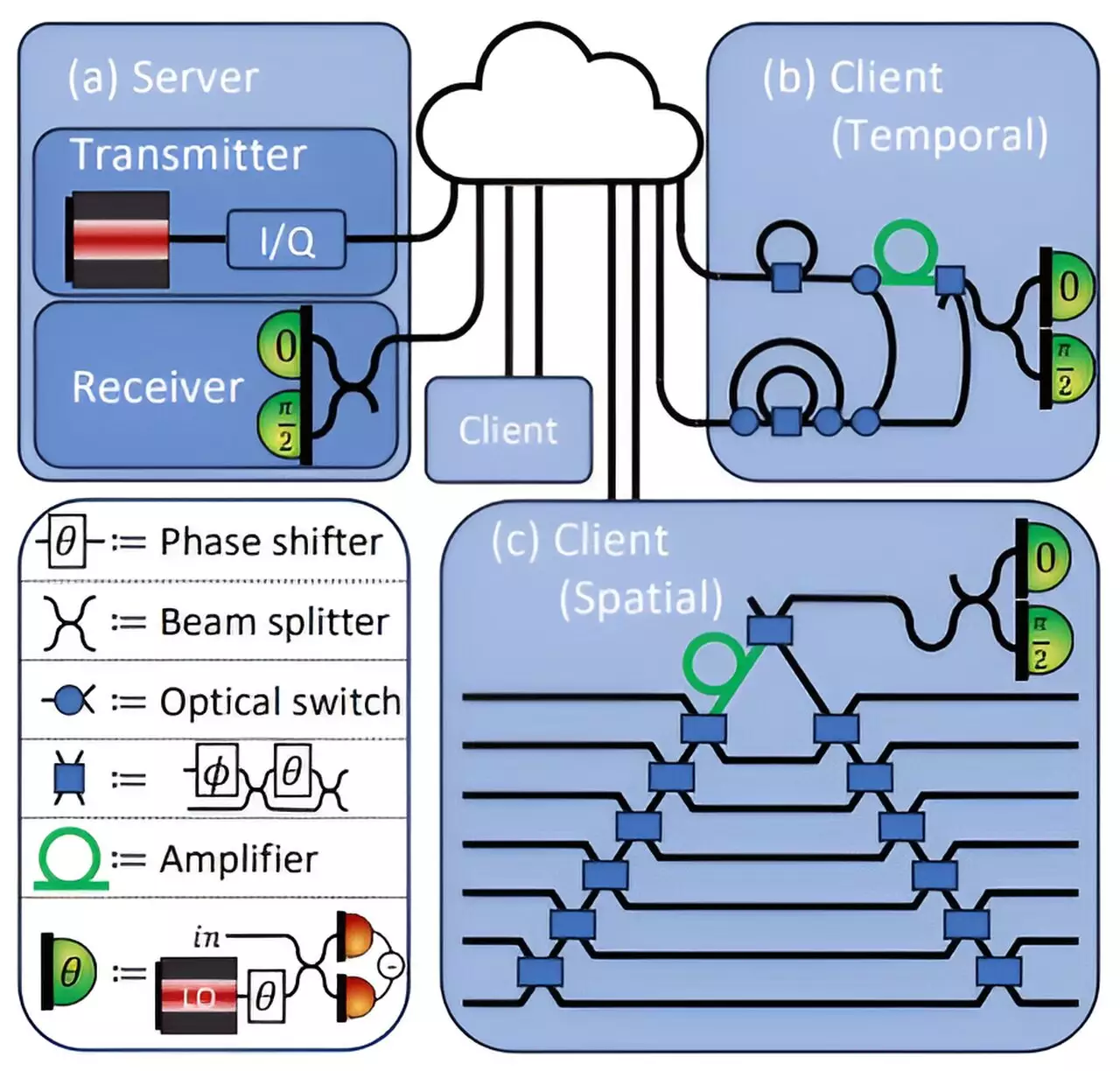Deep learning has revolutionized industries such as healthcare and finance, enabling advanced diagnostics and predictive modeling that can outperform traditional methods. However, the computational requirements of these models necessitate the use of cloud-based servers, raising significant concerns about data security and privacy. MIT researchers have taken a groundbreaking step towards addressing these challenges by developing a quantum protocol designed to fortify data security during the delicate process of deep learning computations.
The explosion of deep learning models, such as GPT-4, has opened new frontiers of possibility, yet these tools demand vast computational resources that many local systems simply cannot provide. The push towards cloud computing has been swift and overwhelming, especially in fields like healthcare, where sensitive patient data must be handled with the utmost care. As hospitals grapple with the risks associated with sending confidential data over the internet, the adoption of AI technologies becomes increasingly precarious. Ethical and legal considerations around data privacy fuel hesitation, and the need for a safety net grows ever more pressing.
To tackle these pressing issues, researchers at MIT have devised a novel security protocol that takes advantage of the unique properties of quantum mechanics, particularly the behavior of light. By encoding data into laser light used in fiber-optic systems, this protocol ensures that information sent to and from a cloud server remains impervious to cellular interception and copying attempts. This reliance on quantum mechanics sets a new standard for information security, particularly in high-stakes fields such as healthcare, where violations of privacy can have severe repercussions.
In their groundbreaking work, the team demonstrated that the new protocol could maintain an impressive accuracy of 96% while ensuring the integrity and confidentiality of data. As Kfir Sulimany, the lead author of the study, notes, “Our protocol enables users to harness these powerful models without compromising the privacy of their data or the proprietary nature of the models themselves.” This builds upon years of research in quantum cryptography, melding innovative technological advancements with the pressing needs of contemporary data privacy concerns.
A key component of the protocol is the communication between two parties: a client that holds sensitive data, such as medical images, and a central server that utilizes a deep learning model for predictions. For instance, when analyzing whether a patient has a disease like cancer, the client can submit the necessary data to the server without exposing the underlying confidential information. The quantum protocol allows data to be encoded into the server’s neural network weights via laser light, ensuring that only essential computations occur while keeping sensitive information shielded.
This form of deep neural network operates through layers of interconnected nodes, with each layer performing calculations that eventually lead to a final prediction. Using the no-cloning principle of quantum information, attackers are unable to duplicate the encoded data without detection. The mechanism is ingeniously designed; the client’s measurements permit just enough interaction for computations without affording any exposure to the server.
Ultimately, this pioneering protocol stands to influence not just healthcare but also a wide array of fields that require secure handling of sensitive data. As researchers continue to refine these methods, potential applications could range from enhancing privacy in distributed architectures to improving the security of systems leveraging federated learning, where multiple parties collaborate using their own datasets to train shared models. The implications of such advancements suggest a wide horizon for possibilities that blend quantum security with the rapidly evolving landscape of artificial intelligence.
The research is not only a testament to the utility of quantum technology in securing data but also a challenge to the existing paradigms of data handling, emphasizing the dual need for computational efficiency and stringent security measures. The desire to ensure that sensitive data is never exposed while still enabling the full functionality of deep learning models could shift the way organizations approach cloud computing altogether.
As data privacy concerns loom larger in a digitized world, this work from MIT researchers stands as a cutting-edge approach to a critical dilemma. It intertwines various fields – quantum cryptography and deep learning – in a way that promises to secure the future of sensitive data in the cloud. As the researchers continue to explore and test the versatility of their protocol, the intersection of these innovative technologies could usher in an era where individuals and organizations can confidently harness the unparalleled prowess of AI without sacrificing their confidentiality.


Leave a Reply